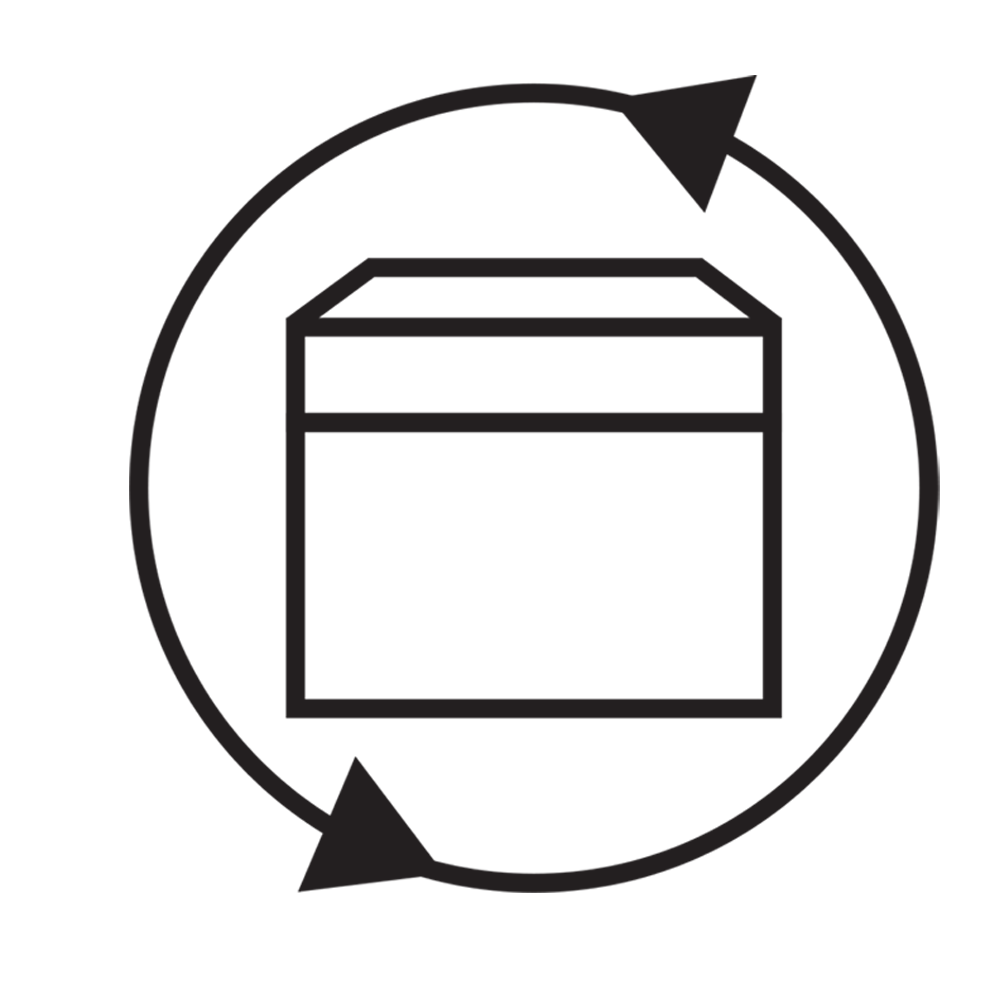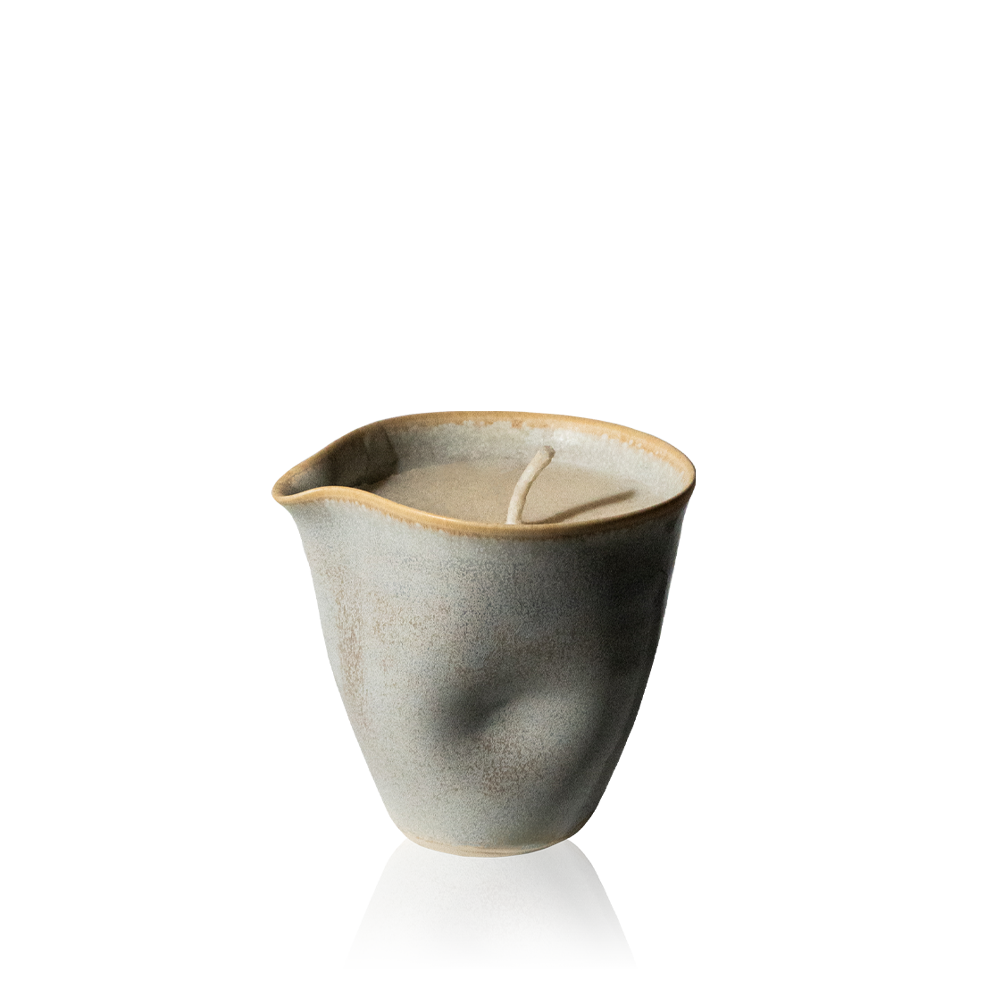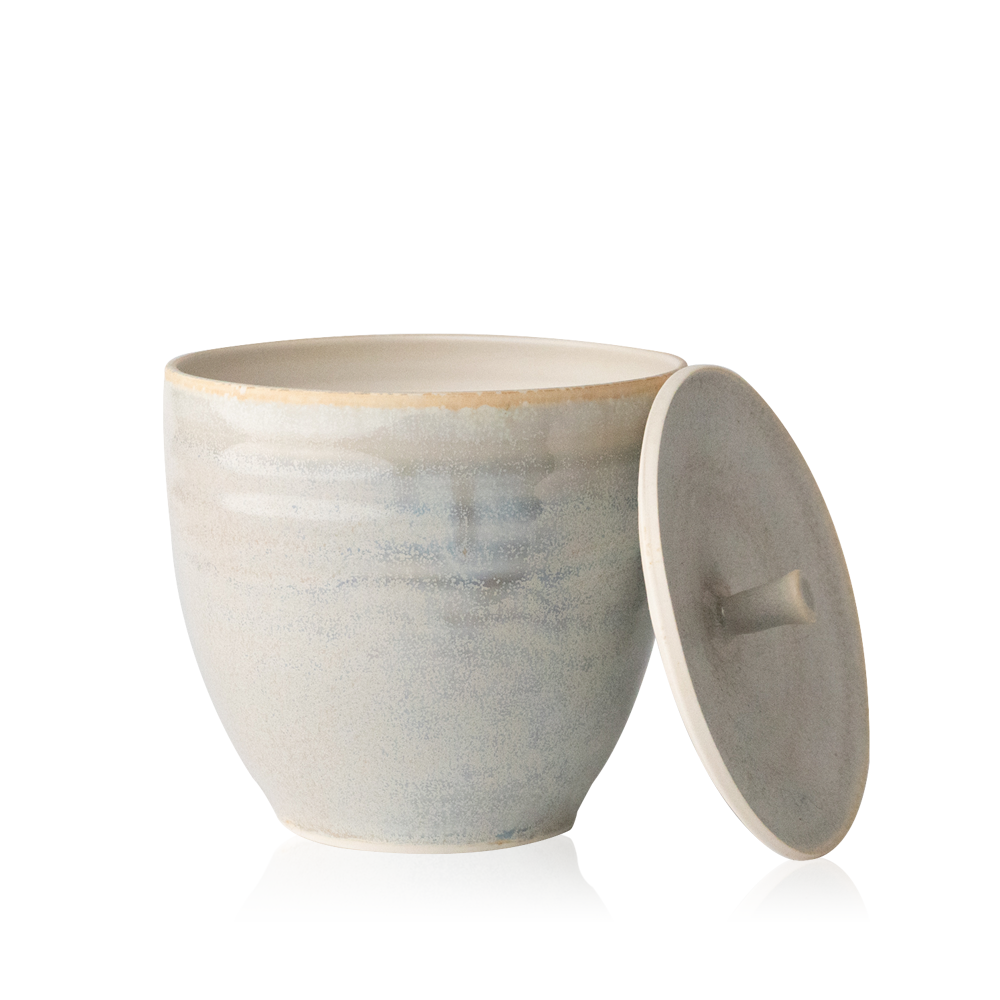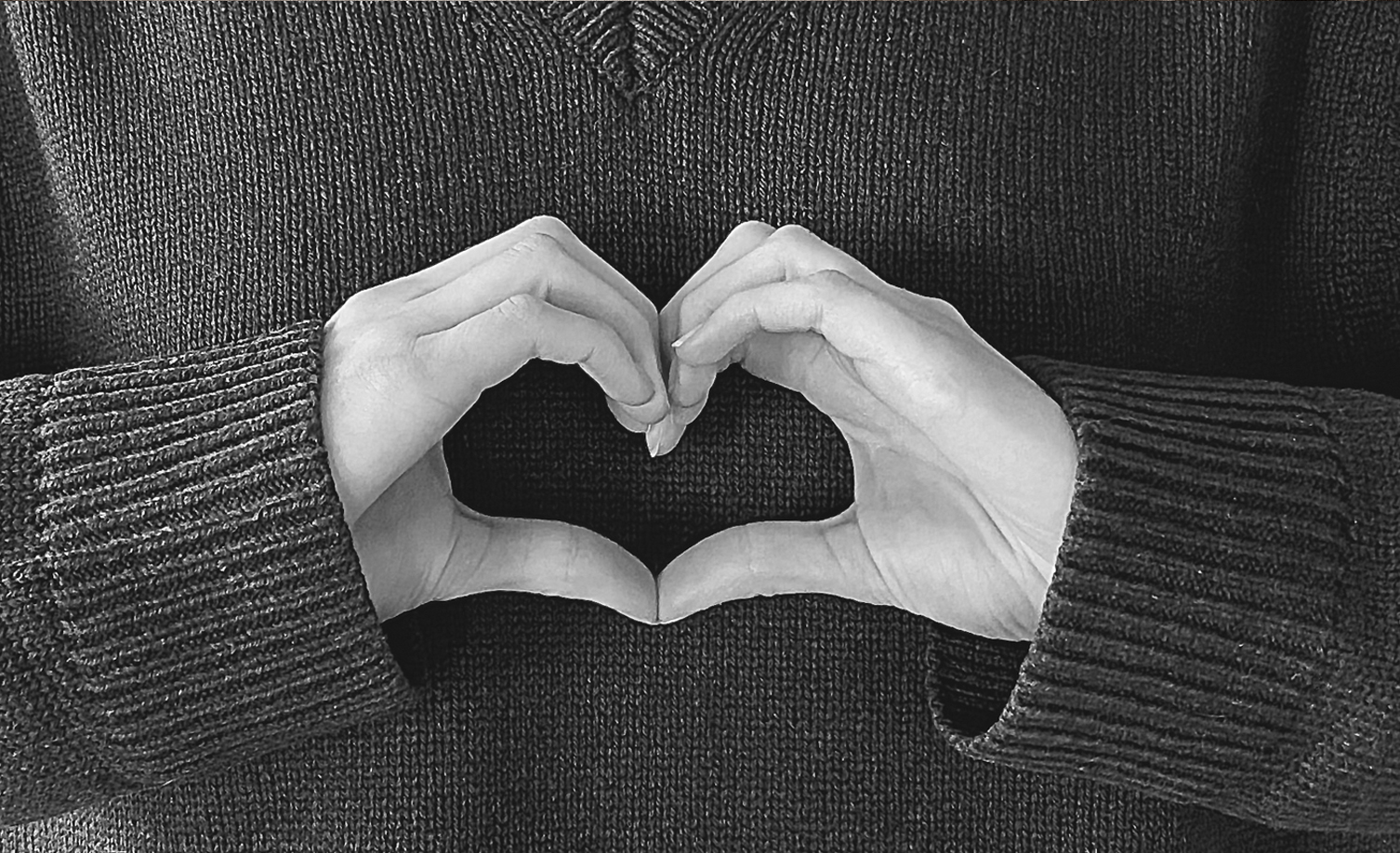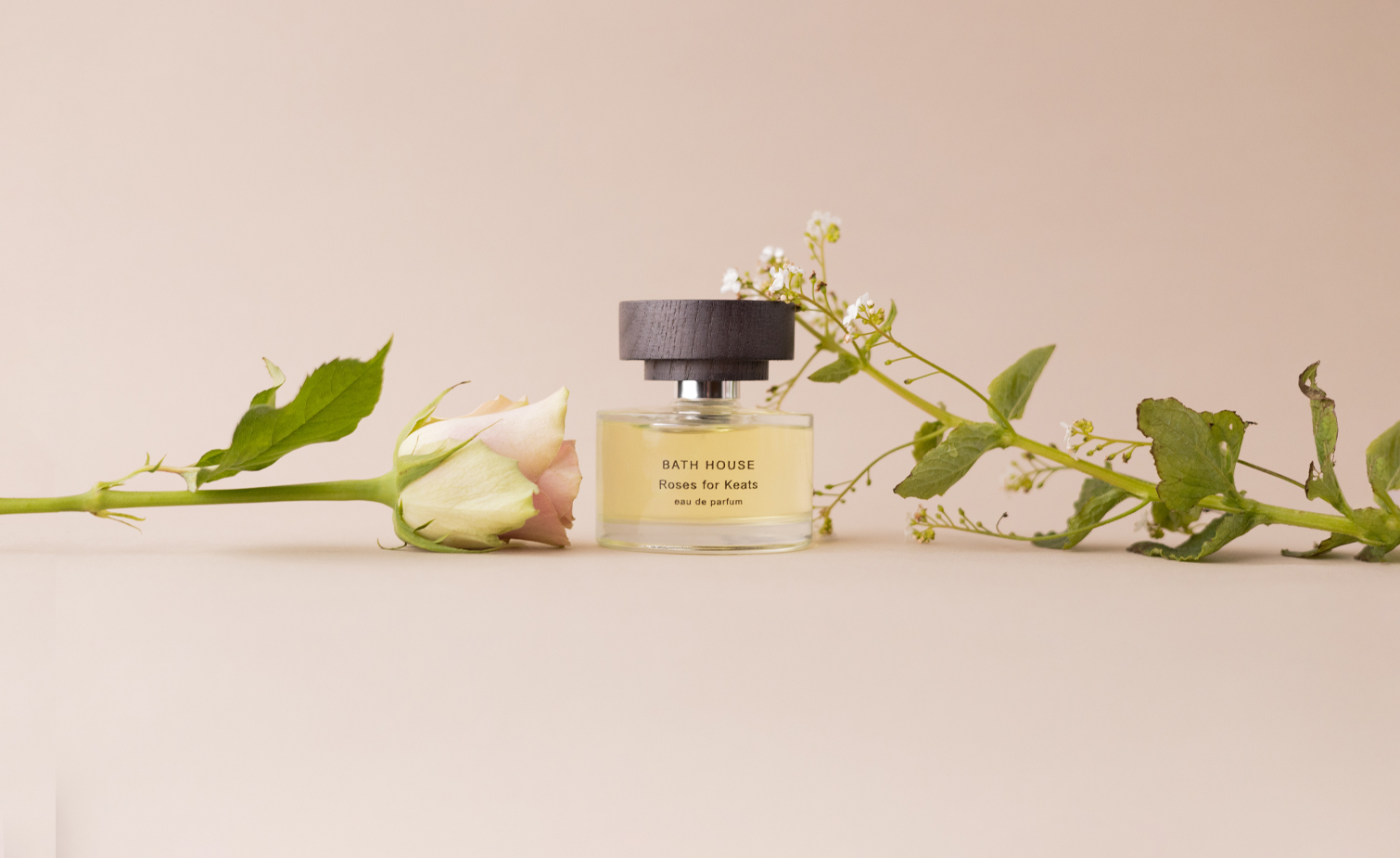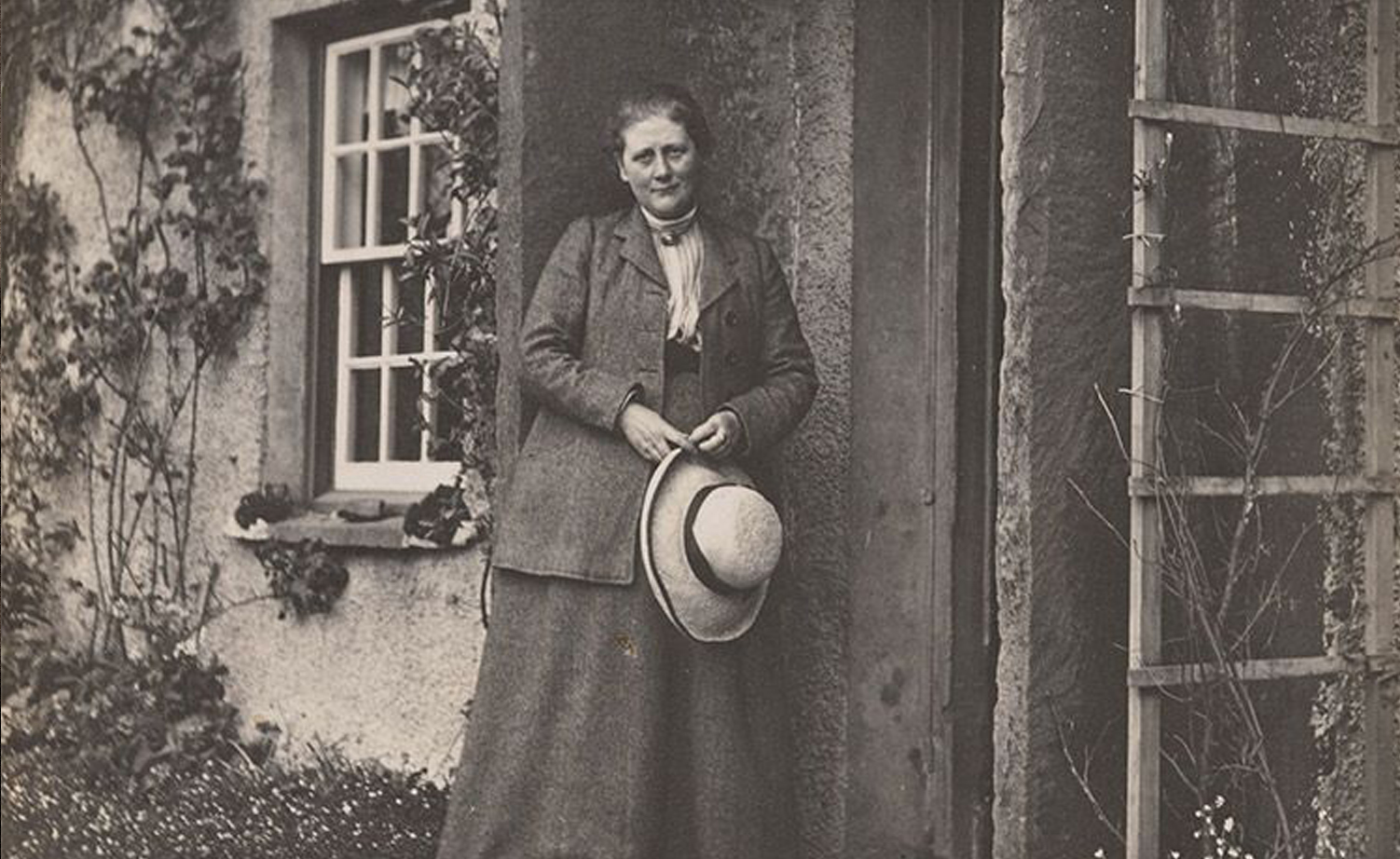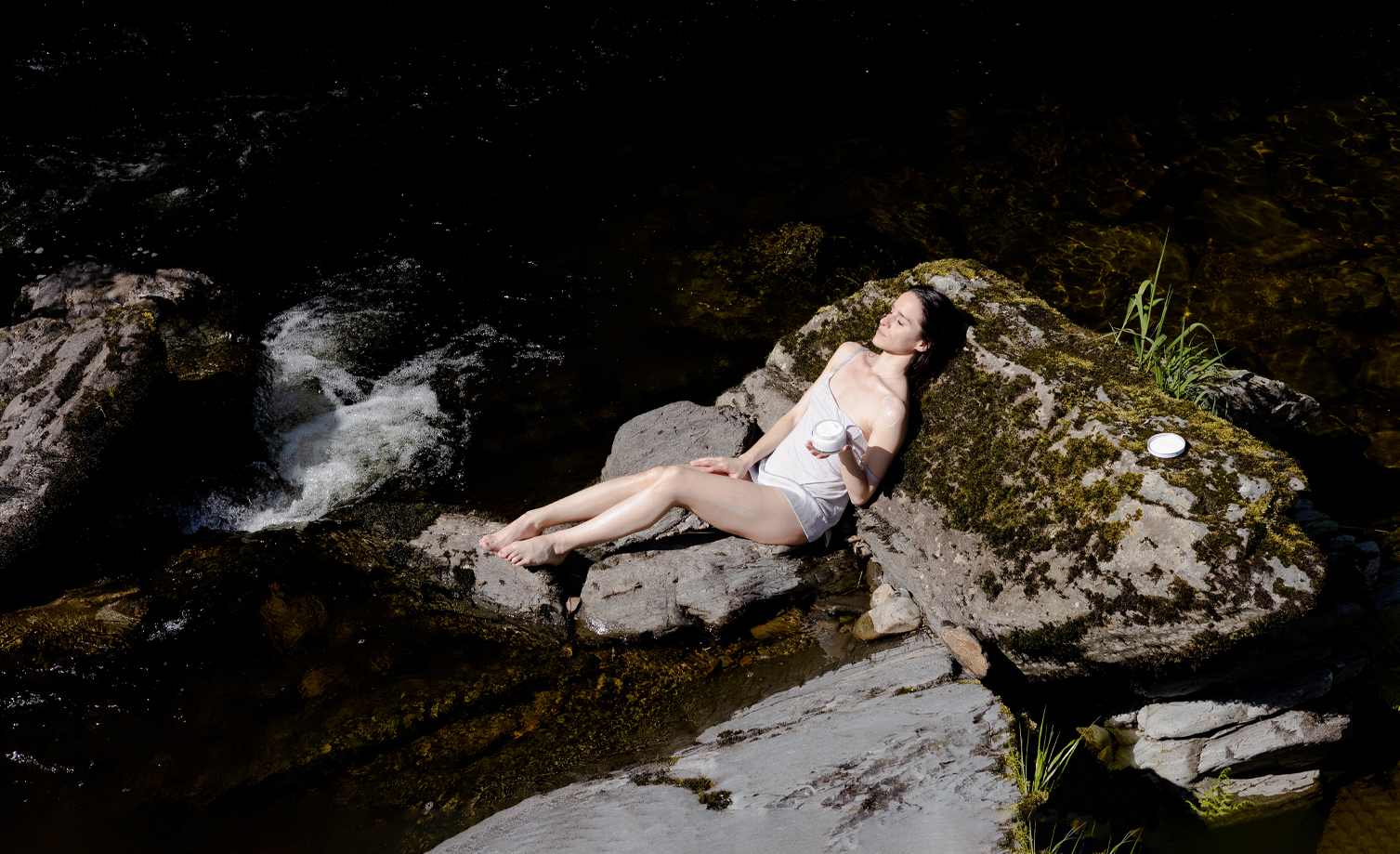We have admired Rebecca’s work for a long time and recently asked her to make some candle jars and lidded vessels for our bath salts which were beautiful and proving to be very popular.
We interviewed Rebecca at her studio in Kendal to find out more about her ceramics, motivation and thoughts behind her working practice. The studio is clearly a very personal space, full of the tools of her trade, a kiln, a wheel, pots drying on shelves and at various stages of completion and her finished work displayed for sale.
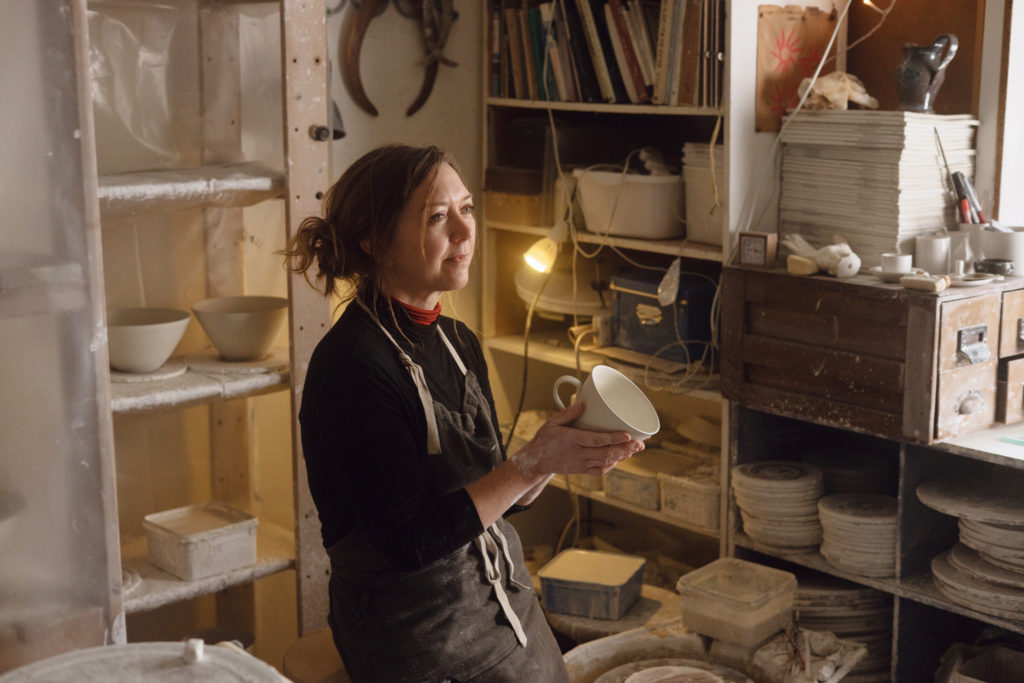
As Rebecca worked pummelling and kneading a large piece of damp clay, I asked her to explain something of her background, where she grew up and early influences in art.
I grew up in Winton near Kirkby Stephen, my parents were both creative, my dad was a teacher of metal work and he was very good at making all sorts of things and when he retired he became a silversmith working on commissions for various churches. My mum was an economics teacher, she made jams and preserves and we grew all sorts of vegetables and had goats and animals. It was a nice place to grow up and is where my new studio will be.
Ah yes I noticed you were moving into a new studio.
Yes it’s at the house…my mum still lives there, it’s in the old goat shed which I’ve put a new kiln in and made good for working.
Will the work you do there be the same as you have been making?
Yes, similar but different. It will be working in parallel with what I do now but I want to experiment a bit, maybe dig up some different natural clays from the landscape and apply the same approach to making and throwing, but using a different clay body and see what happens. Having thrown using porcelain for twenty years I think it will inform how I approach my work, using a black gritty clay. I will still make functional work, but there will be new challenges and obstacles to overcome and new outcomes.
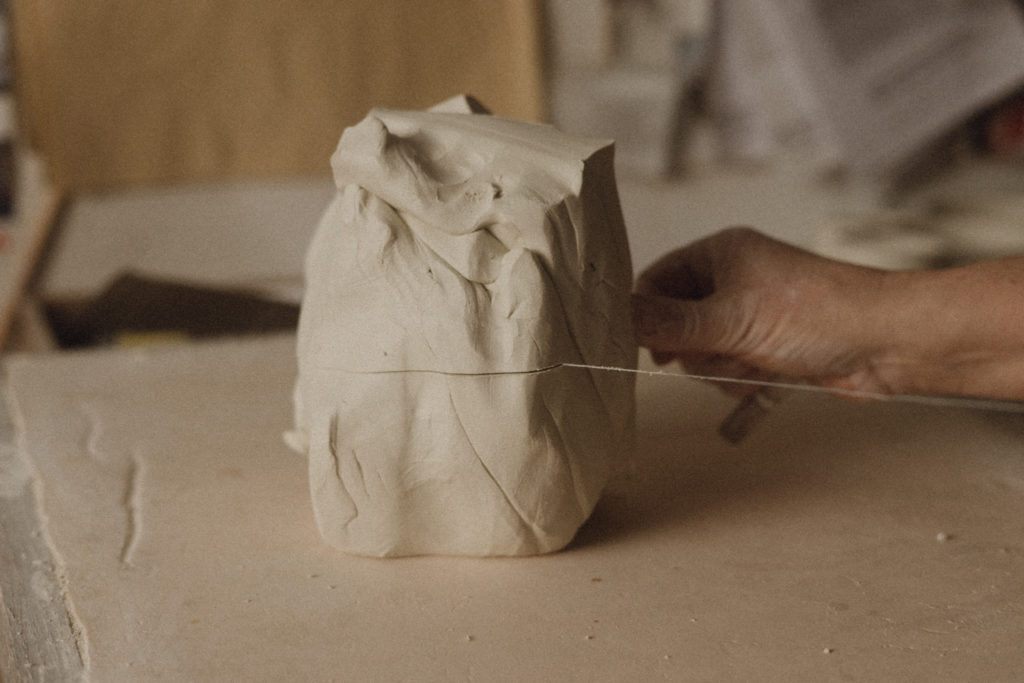
So have you always worked with porcelain?
No! When I was a student at Glasgow School of Art and shortly after I worked with press-moulds, making quite large earthy, structural pieces, so a bit like what I’m returning to. They were quite sculptural pieces and I also worked with glass lead crystal at this time using lost wax casting, making loose organic forms, but these were ridiculously labour intensive and there was no way of continuing.
Rebecca begins throwing the clay on the wheel concentrating at times and explaining her journey…it wasn’t very…she breaks to focus on the clay spinning…
I wasn’t involved enough and I decided in order to keep being a ‘workshop maker person’ that my work needed to be something that could be sold. I thought I needed to simplify everything. I realised I really liked the immediacy of making and throwing, so when the kids were little I started moving into working with porcelain. Starting from a small point and working out, learning rather than making it into a massive thing. I wasn’t using any colour then. I just used the clay and I started from scratch. Porcelain itself has certain qualities, it’s quite unforgiving as well as being really responsive to what you do to it which I liked. I then slowly brought in colour and I thought, well I have small kids if I can just keep going just keep making.
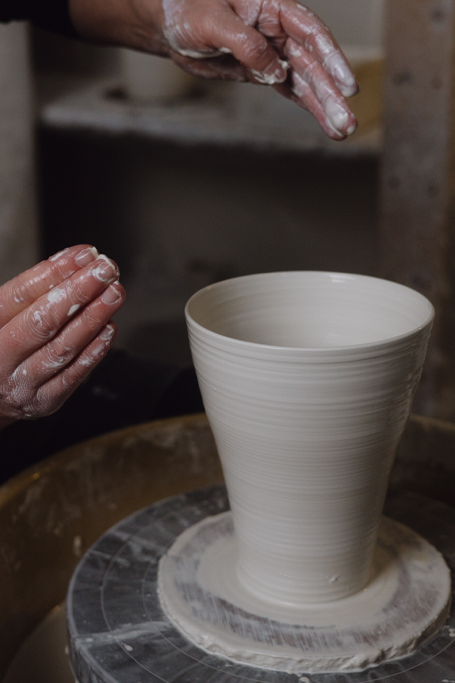
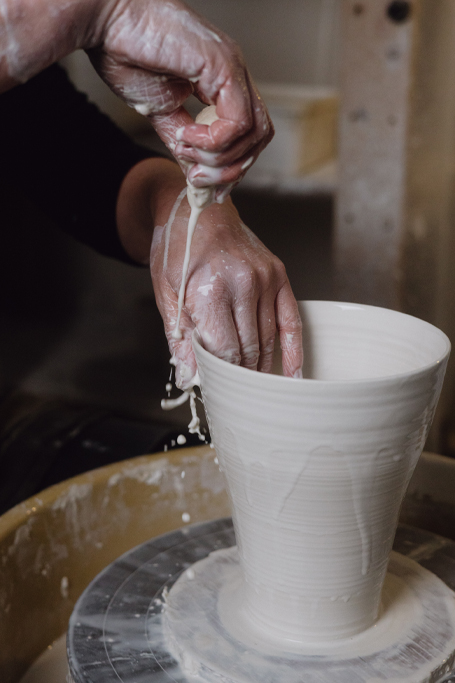
Do you think porcelain dictates something about scale? It seems to be associated with small delicate pieces.
It does, kind of. I like the domestic scale of what I make working with porcelain, I don’t feel compelled to make large works and it doesn’t really lend itself to large works. I want to make really domestic scale works which people use and enjoy. Like a daily ritual sort of thing, something like an object that people would use a lot and really love it.
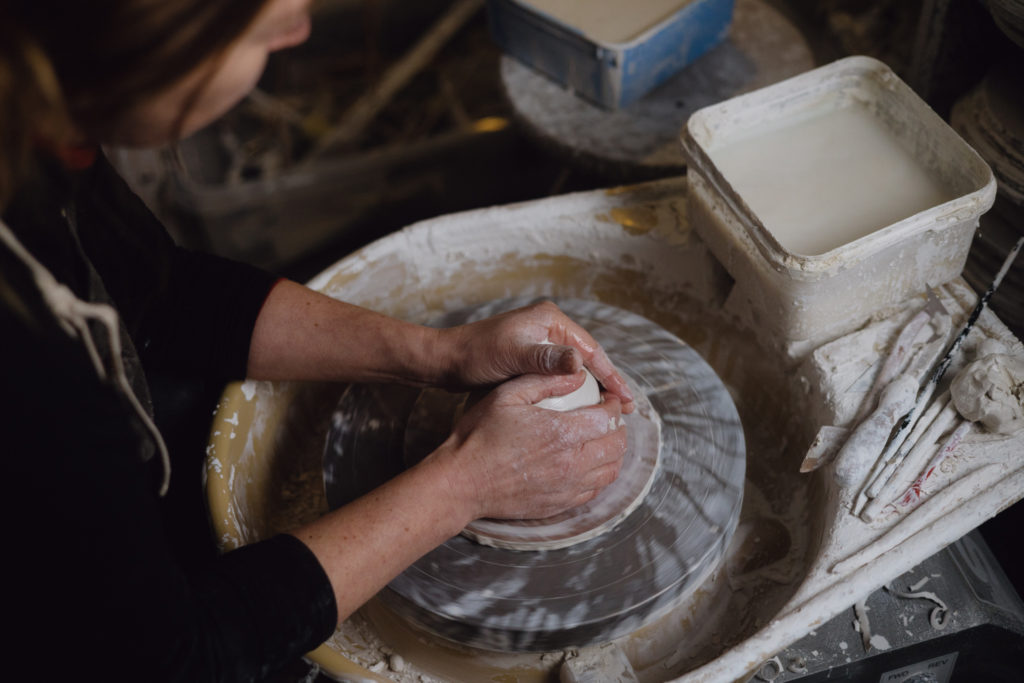
Yes…I was thinking at home we have several of your cups and over lockdown, as a family we changed our tea drinking habits from the very large, like builders tea to much more refined teas, not herbal, but nice teas without milk and we serve them in various sizes and shapes of your cups. So we when we all got together as a family there’s sometimes a little fight over which cup we want, large or small you have to be quick to get the cup you want!
Yes that’s brilliant, that’s what I like to think my work did for people. A lot of food and drinks we consume is cheapened by how we interact with it. How much nicer is a simple meal made in a lovely bowl; it’s part of the experience.
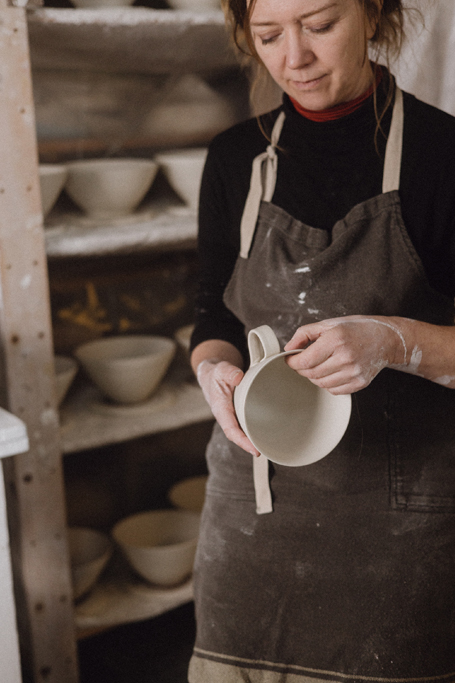
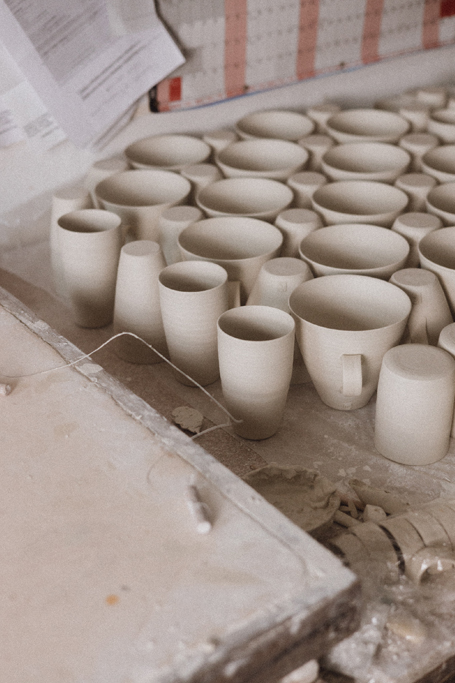
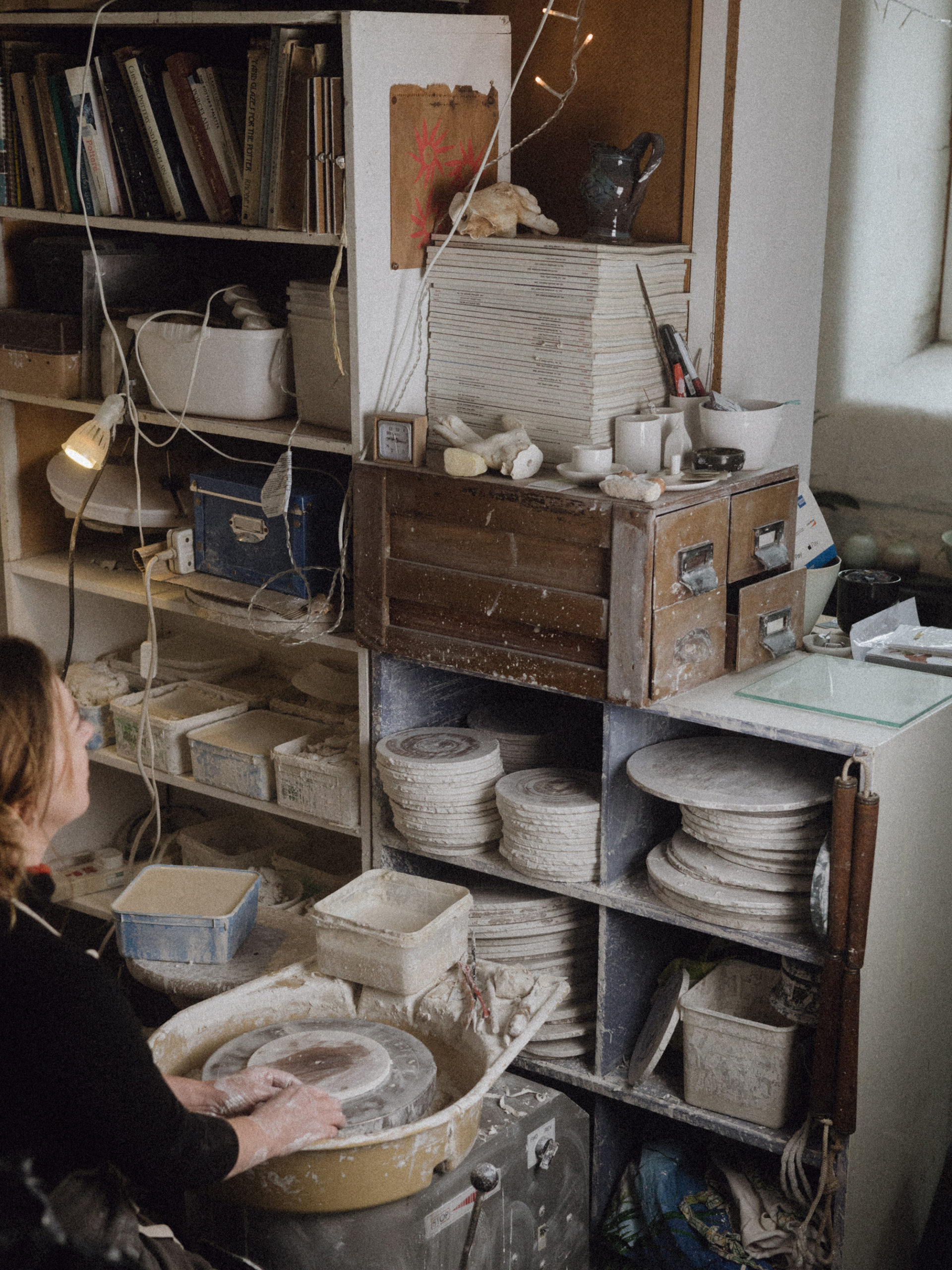
I notice recently you are experimenting with new marks and glazes?
Yes, I want to do some kind of mark making. I’m at the stage of still finding out what the glazes let me do. I began with monochrome but then also brought colour in and simple shapes and forms. I’ve been looking at trees, drawing their simple natural forms and stuff in the landscape, it’s very early.
I was going to ask if there is a strong connection with nature in your work?
Yes, I would say so, my connection to nature is quite close. I realise colours and spaces in the Cumbrian landscape are close to me, maybe the brush marks etc are a kind of way of re-exploring the environment of my childhood. In a way it’s sort of under my skin. I feel as though I’m just about to pull in those new influences into my work. I’ve been learning my craft developing and comparing forms, the brush marks and the colours I might start to draw with new visual surface forms. I feel I just need to get them.
Often If I have a new idea I test it, but more often it doesn’t work. I might try ten times or more and then if it’s not working I might go back to it again some time later and try again a few days or even sometimes years later.
And do you use a sketchbook? Yes, but not as much as I should. I like drawing. My daughter Mia who’s studying fashion says I should go out drawing and sketching more.
Yes it’s something that can get lost in your practice, in the design work we do at Bath House there’s no time, you just have to get on with it and yet sketchbooks are so inspiring and offer such a chance to experiment freely.
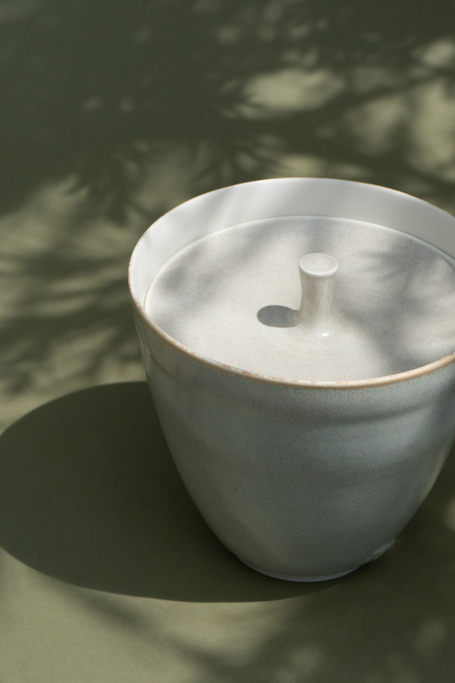
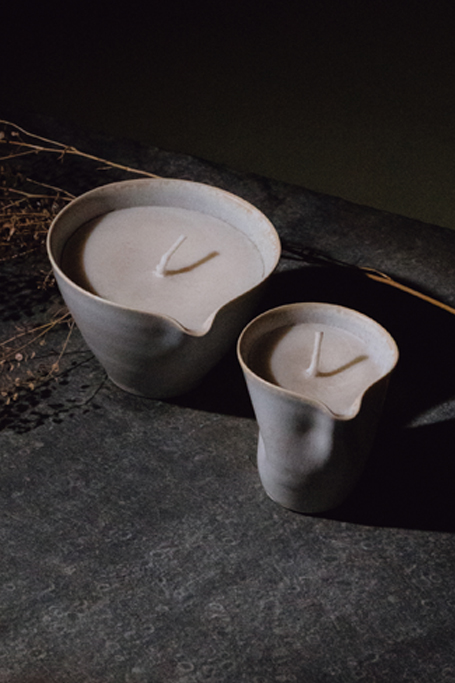
Do you think your daughter will become a maker with a studio, in some way with her fashion work?
I think so, though she works better with people around, for some people it can be hard working on your own. It’s been one of the biggest challenges for me being independent. You are on your own sometime for days you don’t speak to or see anyone apart from the odd customer popping in.
At the Bath House one of the most important senses is smell so are there any aspects of your work which you associate with fragrance?
Yes, when I come home my daughter will comment “Oh mum you smell of clay” she laughs. Clay is quite earthy, they are subtly different, wet damp clay, or dry clay and the smell wet of slip and glazes and all of that contrasts with the heat and dryness of the kiln and freshly fired clay. I’m quite in tune and aware of smells.
Yes, I noticed the scent of the clay when I came in. It was odd for me because during lockdown we worked from home, away form our work where we are surrounded every day by a mix of all the perfumes we make. At home my nose sort of re-adjusted and so when we visited the shops on reopening I suddenly could really smell them, like really intensely and as though they were all new to me and they smelt really good. I think it’s a well known phenomena, that over exposure to certain scents can in time reduce their potency.
Gosh! Yes, there is lots that happens and that I don’t notice that’s going on in the space and in the process when I’m throwing, I find it hard to put into words. It just is.
Rebecca concentrates on the lip of the vessel she’s making the wheel spins around, and gently pinching the rim of the pot she applies little water and shapes it into the position she wants. The wheel slowly stops.
Wow, so that’s finished, it’s such a different creative medium to what I’m used to, do you find you get lost in it? Yes, yes, exactly! It’s quiet meditative, the whole process…I’m absolutely happiest when I’m throwing, nothing else! Everything else is just allowing me to spend more time throwing really.
We would like to thank Rebecca for sharing her thoughts, it was a fascinating discussion, helping to contextualise what motivates and inspires her work and we are excited to see where her artistic journey takes her next.
To see more of Rebecca’s work visit her studio at Studio 18, The Factory, Castle Mills, Aynam Road, Kendal, LA9 7DE, or visit her online at www.rebeccacallisporcelain.com. Follow her creative journey on Instagram at rebeccacallisporcelain. Discover our collaborative bath salts jars and candles –
